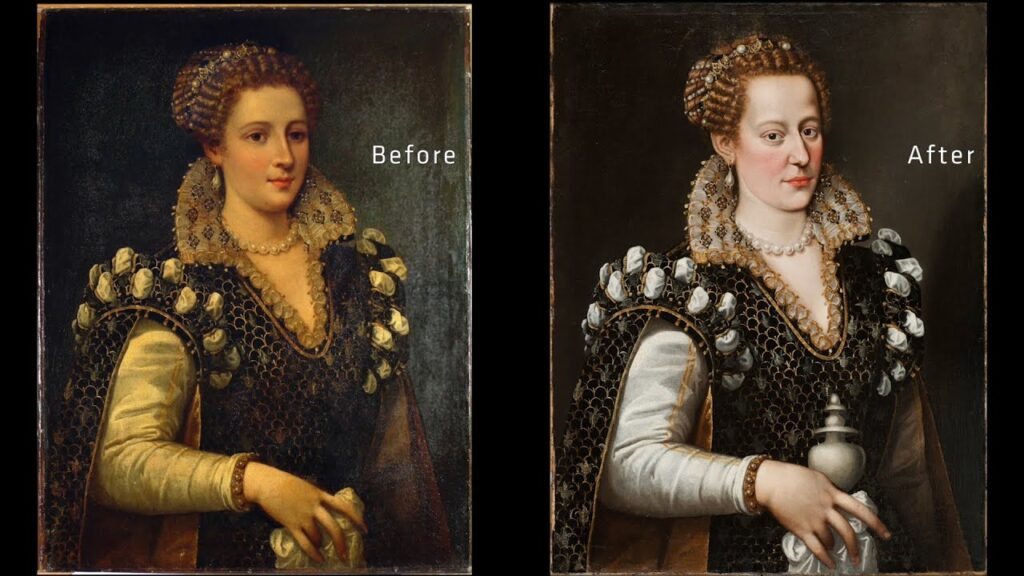
""You have to ... tell her she's going to look lovely," she says, above, spreading varnish over a 16th-century portrait of Isabella de' Medici prior to starting the laborious process of restoring years of wear and tear by inpainting with tiny brushes, aided with pipettes of varnish and solvent."
"(She) looks at paintings differently than other people, too-not as flat, static objects, but as three-dimensional compositions layered like lasagna. The minute she saw the oil painting purported to be of Eleanor of Toledo... Baxter knew something wasn't quite right. The face was too blandly pretty, "like a Victorian cookie tin box lid,""
Some people talk to plants; Ellen Baxter talks to the paintings she restores. Baxter applies varnish and inpaints with tiny brushes and pipettes to reverse years of wear and tear. The portrait of Isabella de' Medici had been concealed beneath a 19th-century overpainting depicting a daintier woman reputed to be Eleanor of Toledo, wife of Cosimo I de' Medici. Louise Lippincott found the work in museum basement storage and brought it to Baxter for a second opinion. Baxter combines art-history training with chemistry and conservation skills and perceives paintings as three-dimensional compositions layered like lasagna.
Read at Open Culture
Unable to calculate read time
Collection
[
|
...
]